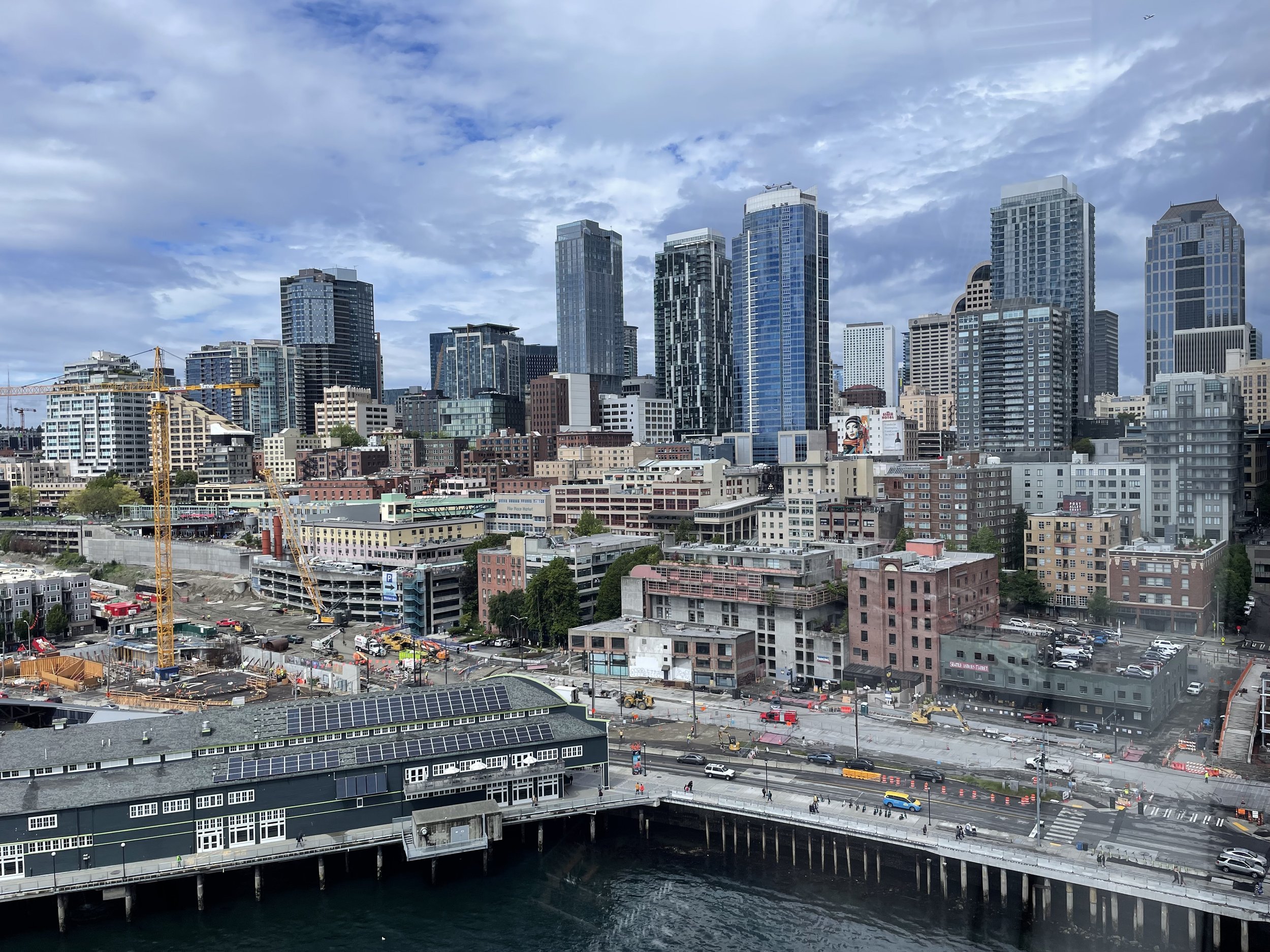
Self-Led Education Portal:
Energy Management Plan
GETTING STARTED | ENERGY MANAGEMENT PLAN | OPERATIONS & MAINTENANCE | ENERGY REPORTING & TARGETS | EMISSIONS REDUCTION
The Energy Management Plan (EMP) is one of the WA State Clean Buildings Law’s three requirements. This plan is a comprehensive report of your building’s energy management activities as outlined in Section 5 of the standard.
WA State Clean Buildings Sections and Tasks
Below is a description of the major items to include in your energy management plan (EMP) along with the corresponding WA State Clean Buildings Law sections. Please review the WA State law and utilize the WA State Department of Commerce’s EMP Planning Tool to help guide you through development of your EMP. You may find your organization already has some of the requirements done already. You can repurpose existing pieces of documentation to include in your energy management plan. If you want more direction, consider joining our Light Coaching Pathway for advanced templates and one-on-one support.
Once you develop your EMP, you will need to upload it to the WA State Clean Buildings portal and it will be part of the compliance package submitted to Commerce every 5 years. The EMP is meant to be a living document that is updated when there are significant building, personnel or process changes. The plan should be made available to the building’s stakeholders on an annual basis with flexible sharing options that may include website, email, or on-site copies.
-
Seattle's Energy Benchmarking Law (Seattle Municipal Code 22.920 ) already requires owners of non-residential and multifamily buildings (20,000 square feet or larger) to track energy performance and annually report to the City of Seattle through ENERGY STAR Portfolio Manager.
If you are currently in compliance with the City’s benchmarking practices, you may be able to retrieve all required information for the WA State Clean Buildings Performance Standard from your existing profile.
For more information visit the City of Seattle Benchmarking Law website.
-
You can find your building’s weather normalized energy use intensity (WNEUI), energy use intensity (EUI), and net energy use in the building’s ENERGY STAR Portfolio Manager account. Learn more in our Energy Reporting & Targets section.
-
Any building changes that would influence the Energy Use Intensity of your buildings should be included. Record these changes as necessary, including the following parameters:
Documentation of original, current, and changes in the number of occupants, weekly operating hours, or time of day scheduled for occupancy, production rates, and energy using equipment that would have caused a change in the measured WNEUI and EUI.
-
Buildings that are already meeting their energy performance target or can meet their target with simple energy measures do not need a professional energy audit.
Information found in “Tune-Up” reports from compliance with the Seattle Building Tune Up policy can also be a source of documentation for WA State Clean Buildings compliance. Learn more on the O&M section.
-
Documentation should include the following:
An operations and maintenance (O&M) program as defined in Section 6 for the EEMs
An implementation plan for EEMs, including EEM commissioning
Staff training plan for EEMs
Ongoing commissioning plans for the EEMs
-
Building occupants should be informed about the benefits of efficient energy use. If applicable, occupants should also be informed on the use and adjustment of operable windows, heating, ventilation, and cooling (HVAC) system controls (thermostats), and lighting controls.
-
Staff who operate energy using equipment should be trained on proper operation and standard maintenance requirements to upkeep the equipment longevity and efficiency.
-
Identify efficient replacements for major equipment in case of failure. Operators should understand the remaining useful life on equipment and have a plan for replacement before the equipment fails. Energy efficiency and ENERGY STAR rated equipment must be considered if applicable.
The City of Seattle is also developing a Seatlle specific emissions-based building standard that will require buildings to reduce fossil fuel consumption through sources like gas and oil. Capital management plans should not include the installation of new gas equipment and should prioritize projects that reduce greenhouse gas emissions. Stay up to date on the policy developments here.
-
Building operators and maintenance teams should have access to a current list of suppliers and manufacturers for emergencies, standard maintenance, and potential upgrades. Best practice is to inform suppliers of your organization’s energy management goals and requirements. These lists should be kept current as vendors change.
-
A lighting schedule is not required for buildings that meet their EUIt or have implemented a lighting upgrade through a utility program within the previous five years.
Lighting schedules should closely reflect the activity type and occupancy of the space. Schedules can be broken out by space type and scheduled accordingly.
Lighting Power Density (LPD) is a measurement of power consumed by the lighting equipment in a defined area. The unit of measure for the LPD is watts per square foot. State and local energy code often provide guidelines on an acceptable LPDs according to the space and activity type of the room.
Use the NEEC Start Building Center lighting workbook to help you determine your LPD and develop your lighting schedule.
-
A lighting satisfaction survey is not required for buildings that meet their EUIt or have implemented a lighting upgrade through a utility program within the previous five years.
The WA Clean Buildings law currently references a lighting satisfaction survey and lighting checklist as described in Appendix D of Performance Measurement Protocols for Commercial Buildings. A free version of this resource is currently unavailable. Commerce has plans to address this with an update when possible.
-
Refer to the O&M program section for more information
Video shared with permission from the Resource Conservation Management Support Program at Washington State University Energy Program.
View Washington State University’s Clean Buildings requirements webinar series episode featuring “Energy Management Plans for Clean Buildings”:
